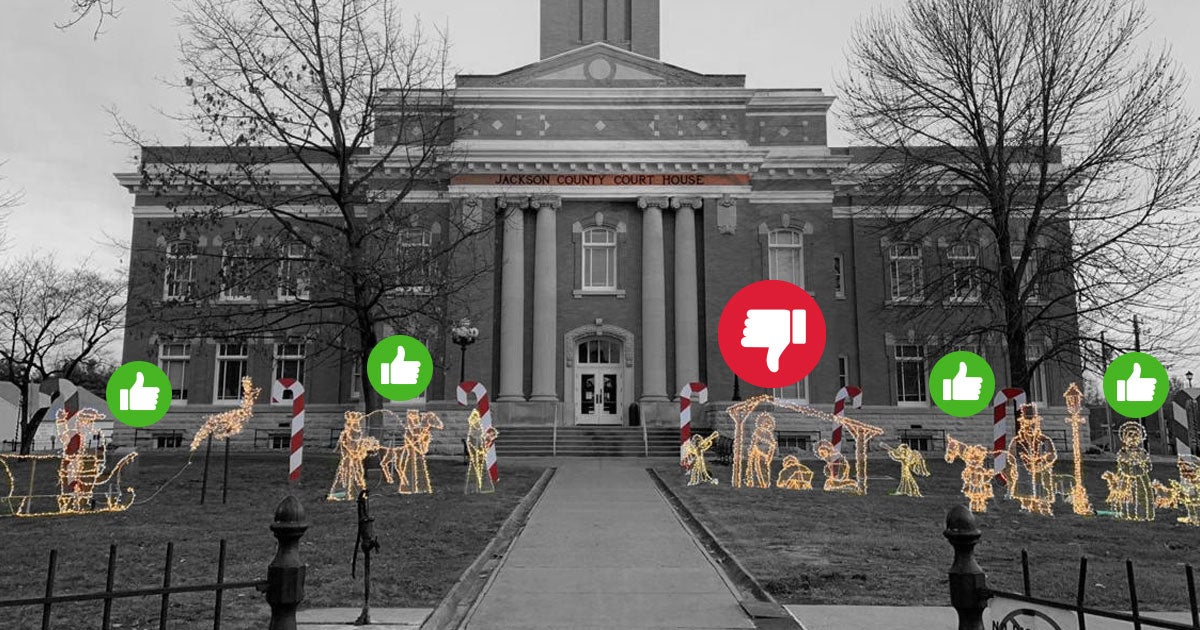
by Jorge Gomez • 5 min read
First Liberty attorneys recently filed a friend-of-the-court brief in Woodring v. Jackson County, an important religious freedom case involving a long-standing public nativity display in Jackson County, Indiana that’s come under attack from a concerned atheist resident.
Earlier this month, the U.S. Court of Appeals for the Seventh Circuit heard argument in this case, and in our brief we urge the Seventh Circuit to allow the display under last year’s U.S. Supreme Court decision in The American Legion v. American Humanist Association.
If you recall, First Liberty’s victory in American Legion not only protected the Bladensburg Peace Cross in Prince George’s County Maryland from being torn down, but also established a precedent to protect religious symbols across the country. In its 7-2 decision, the Supreme Court made it clear that public religious displays that are part of our nation’s history and tradition are presumptively constitutional.
It’s important to understand that the nativity scene has been displayed without incident in the town of Brownstown for nearly two decades. Local residents have even made it part of the town’s “Hometown Christmas Celebration.”
Adjacent to the nativity scene are other Christmas-themed decorations, including a large lighted Santa Claus, sleigh with reindeer, and a group of carolers. The courthouse grounds are also decorated with many kinds of lights and other non-religious symbols of the holiday season.
However, the legal battle against the Brownstown display began in 2018, when the Freedom From Religion Foundation (FFRF) sent a letter to the county asking for the nativity to be removed because of its religious symbolism. Soon after, the American Civil Liberties Union (ACLU) of Indiana sued the county on behalf of an out-of-town individual who drove by the display and felt “offended” by it.
According to the attorneys defending the nativity display, the person who complained not only lived outside of the county, but also did not conduct or transact business at the old county courthouse.
In April, a federal judge in the Southern District of Indiana held the Brownstown display violated the Establishment Clause of the First Amendment and applied the much criticized and now specifically rejected “Lemon Test” to reach its decision.
This, of course, isn’t the first or only time that a religious holiday display has come under fire:
It’s no surprise that attacks against religious displays commonly surge during the holidays. But since the Supreme Court’s 2019 landmark decision in The American Legion v. American Humanist Association, several U.S. Courts of Appeal have applied American Legion to uphold their constitutionality:
In short, the Supreme Court made it clear in American Legion: The days of offended observers forcing governments to scrub all public references to the divine are over.
Whether war memorials, holiday decorations, flags, or government seals, public displays with religious content have been—and continue to be—a part of our America’s heritage and history.
With all of the victories and progress for religious freedom that we’ve been able to achieve in the last few years thanks to supporters like you, we have plenty of reasons to be hopeful and optimistic that the Seventh Circuit will rule in favor of the Brownstown nativity display—affirming that these religious symbols appropriately recognize the essential role faith plays in the lives of millions of Americans.